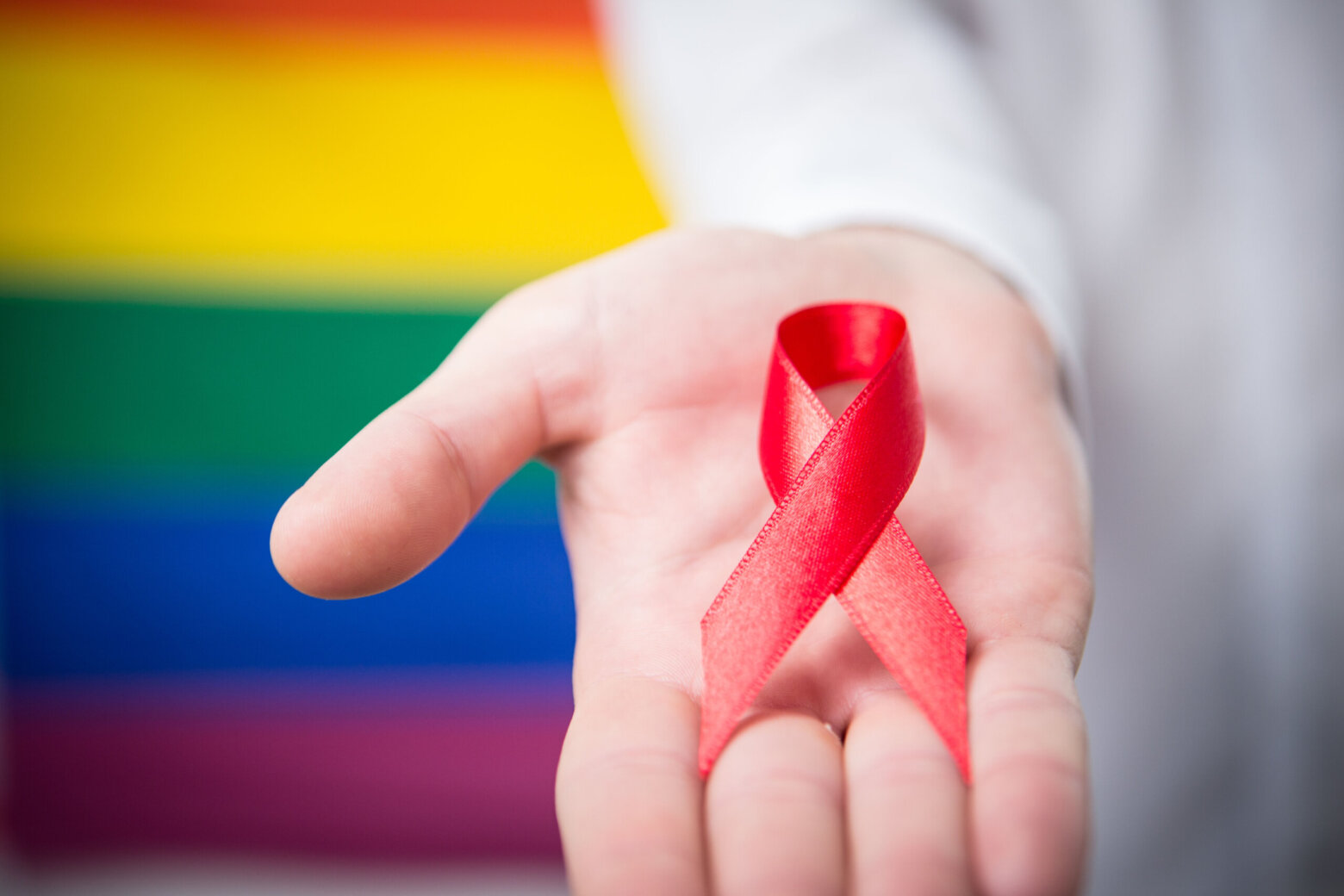National Gay Men’s HIV/AIDS Awareness Day brings calls for regular testing, reduced stigma – WTOP News
National Gay Men’s HIV/AIDS Awareness Day brings calls for regular testing, reduced stigma WTOP


National Gay Men’s HIV/AIDS Awareness Day in the U.S.

The U.S. will observe National Gay Men’s HIV/AIDS Awareness Day on Wednesday. Health care workers in the District said it’s a chance to promote testing for men and continue efforts to eliminate the stigma linked to HIV.
Sustainable Development Goals (SDGs)
- Goal 3: Good Health and Well-being
- Goal 10: Reduced Inequalities
“For many over the course of this epidemic, there’s been the feeling that people with HIV are somehow the vector of this disease when actually, in this case, they’re the root for us to end this epidemic,” said Michael Kharfen, director of the division on policy and data in the federal government’s Health Resources and Services Administration’s HIV/AIDS Bureau.
HIV/AIDS Epidemic in Washington, D.C.
- D.C. has the most HIV cases per capita nationwide, according to Kharfen, at nearly three times the national rate.
- Baltimore and Prince George’s County in Maryland also have a high number of HIV diagnoses.
Moreover, recent data reveals that 70% of all new HIV cases in the U.S. are among gay and bisexual men, even though these groups make up about 2% of the population.
Kharfen said the disproportionate number of gay and bisexual men with HIV/AIDS has created a “greater risk” for new cases. In other words, because more gay men have HIV/AIDS, more new cases occur. And the stigma linked to being gay and contracting the virus is preventing some gay men from receiving lifesaving care.
Impact of Ryan White HIV/AIDS Program
“Over the years, that has complicated the opportunities for gay men to access services, to get tested, get treatment and take advantage of other prevention opportunities,” Kharfen said.
Kharfen has tracked the spread of HIV/AIDS among gay and bisexual men since the 1980s.
He said there are some bright spots in the fight against the disease through the federal government’s Ryan White HIV/AIDS Program. It provides outpatient HIV care, treatment and support services to people without health insurance.
Nearly 91% of gay and bisexual men in the program who receive drugs to suppress the virus are undetectable. Patients who are undetectable cannot sexually transmit the virus to partners and can live longer, healthier lives, Kharfen said.
“People are living and thriving, even with HIV,” he said. “There are so many people who are accessing services and getting care. We have some of the highest viral suppression rates, which is our measure of success in HIV treatment.”
Importance of Regular Testing
Health workers hope the Gay Men’s HIV/AIDS Awareness Day will also highlight the importance of getting tested regularly.
“The first step is to know your status,” Kharfen said. “If your results are HIV-negative, then look into the prevention opportunities, like taking a safe medication that prevents you from getting HIV. And, if the result is positive, get care right away.”
Additional Information
To find out more information on the Health Resources and Services Administration’s Ryan White HIV/AIDS Program, head to the agency’s website.
Conclusion
By observing National Gay Men’s HIV/AIDS Awareness Day and focusing on the Sustainable Development Goals (SDGs), efforts can be made to promote testing, eliminate stigma, and improve the health and well-being of gay and bisexual men affected by HIV/AIDS.
Sources:
Disclaimer:
This website is not intended for users located within the European Economic Area.
SDGs, Targets, and Indicators
-
SDG 3: Good Health and Well-being
- Target 3.3: By 2030, end the epidemics of AIDS, tuberculosis, malaria, and neglected tropical diseases and combat hepatitis, water-borne diseases, and other communicable diseases.
- Indicator 3.3.1: Number of new HIV infections per 1,000 uninfected population, by sex, age, and key populations.
- Indicator 3.3.2: Tuberculosis incidence per 100,000 population.
- Indicator 3.3.3: Malaria incidence per 1,000 population.
-
SDG 10: Reduced Inequalities
- Target 10.3: Ensure equal opportunity and reduce inequalities of outcome, including by eliminating discriminatory laws, policies, and practices and promoting appropriate legislation, policies, and action in this regard.
- Indicator 10.3.1: Proportion of population reporting having personally felt discriminated against or harassed in the previous 12 months on the basis of a ground of discrimination prohibited under international human rights law.
Analysis
The article addresses the issues related to HIV/AIDS awareness and the stigma associated with it among gay and bisexual men. Based on the content of the article, the following SDGs, targets, and indicators can be identified:
1. SDG 3: Good Health and Well-being
The article highlights the need to address the HIV/AIDS epidemic among gay and bisexual men. SDG 3 aims to ensure good health and well-being for all, including the end of epidemics such as AIDS. Target 3.3 specifically focuses on ending the epidemics of AIDS and other communicable diseases by 2030. The article emphasizes the importance of promoting testing, treatment, and prevention opportunities for gay and bisexual men to combat HIV/AIDS. Indicator 3.3.1, which measures the number of new HIV infections per 1,000 uninfected population, is relevant to track progress towards this target.
2. SDG 10: Reduced Inequalities
The article also highlights the disproportionate number of HIV cases among gay and bisexual men, indicating inequalities in health outcomes. SDG 10 aims to reduce inequalities and promote equal opportunity. Target 10.3 specifically focuses on eliminating discriminatory laws, policies, and practices. The article mentions the stigma linked to being gay and contracting the virus, which prevents some gay men from receiving care. Indicator 10.3.1, which measures the proportion of population reporting discrimination based on prohibited grounds, can be used to measure progress towards reducing discrimination and inequalities faced by gay and bisexual men in accessing HIV/AIDS services.
Table: SDGs, Targets, and Indicators
| SDGs | Targets | Indicators |
|---|---|---|
| SDG 3: Good Health and Well-being | Target 3.3: By 2030, end the epidemics of AIDS, tuberculosis, malaria, and neglected tropical diseases and combat hepatitis, water-borne diseases, and other communicable diseases. | Indicator 3.3.1: Number of new HIV infections per 1,000 uninfected population, by sex, age, and key populations. |
| SDG 10: Reduced Inequalities | Target 10.3: Ensure equal opportunity and reduce inequalities of outcome, including by eliminating discriminatory laws, policies, and practices and promoting appropriate legislation, policies, and action in this regard. | Indicator 10.3.1: Proportion of population reporting having personally felt discriminated against or harassed in the previous 12 months on the basis of a ground of discrimination prohibited under international human rights law. |
Behold! This splendid article springs forth from the wellspring of knowledge, shaped by a wondrous proprietary AI technology that delved into a vast ocean of data, illuminating the path towards the Sustainable Development Goals. Remember that all rights are reserved by SDG Investors LLC, empowering us to champion progress together.
Source: wtop.com

Join us, as fellow seekers of change, on a transformative journey at https://sdgtalks.ai/welcome, where you can become a member and actively contribute to shaping a brighter future.







